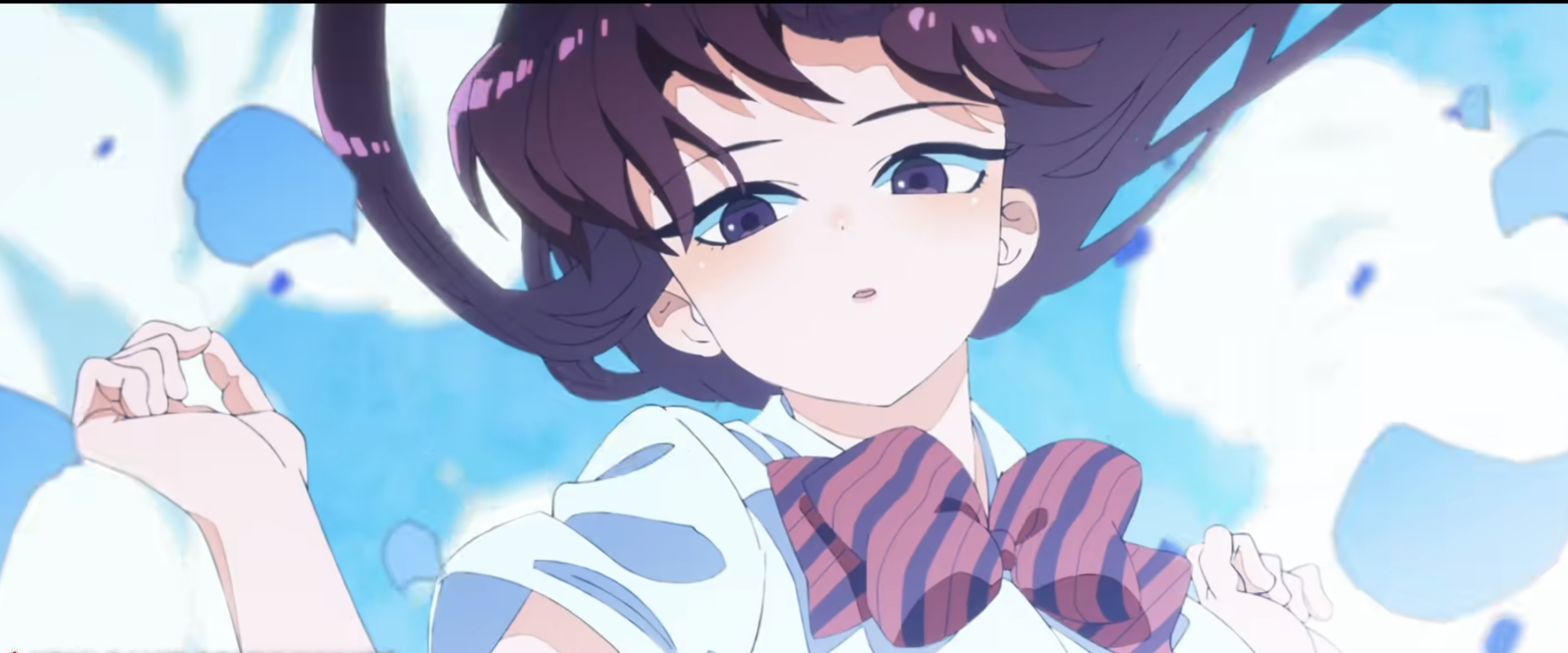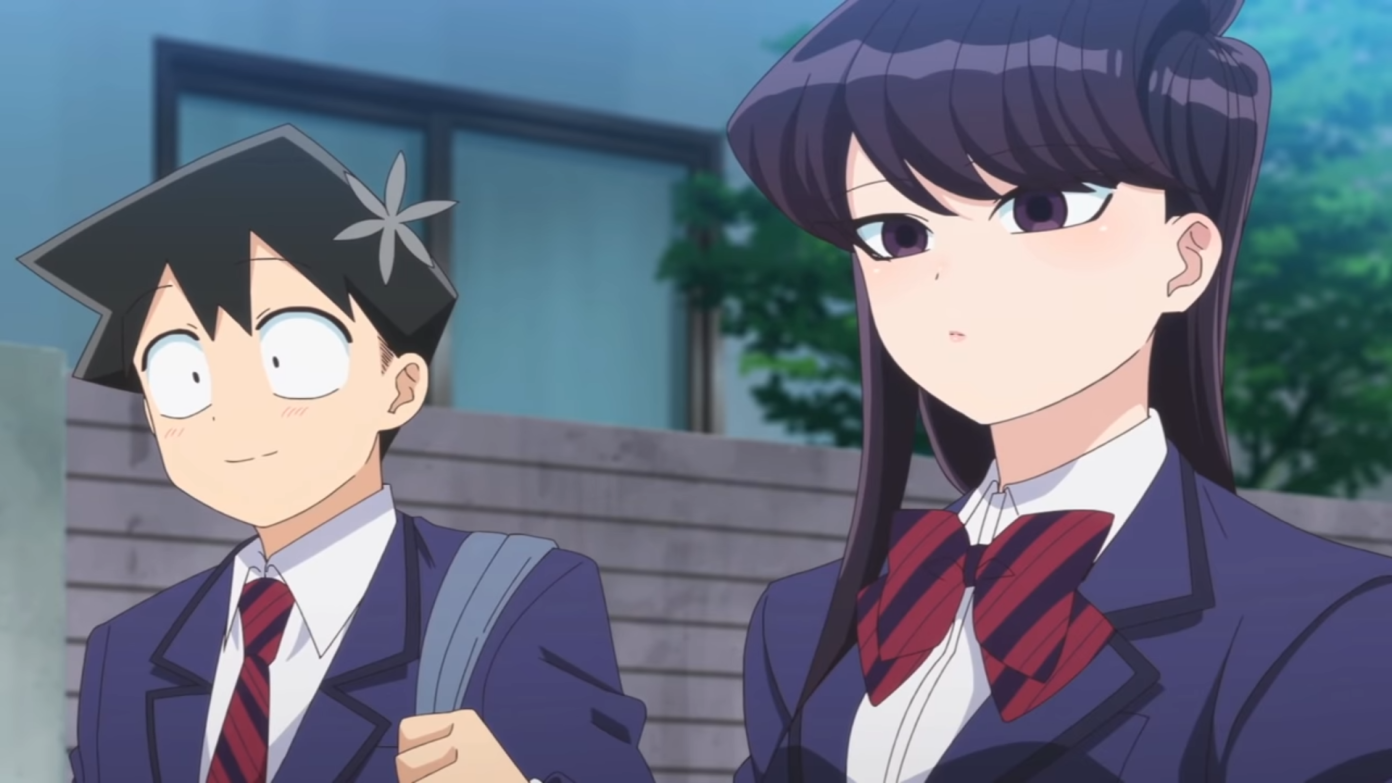Komi Can’t Communicate - Review
Screenshot: OLM & Netflix
You might have encountered the situation: you are about to enter a doctor’s office. Right before you do, you feel a slight squirm in your stomach. You open the door and the room is filled with people. The squirming gets worse. You sit down, but now your leg is bouncing and the squirm does not really go away. You notice the bouncing because your shoe is squeaking on the linoleum and you remember that you sort of forgot to breathe since you entered. You take a deep breath (which might freak out the other people in the doctor’s office - at least you think it might freak them out), and you start feeling better while simultaneously feeling worse. That breath was really loud (it probably was not).
What I want to say is: I identify with Komi from the series Komi can’t communicate.
Written and illustrated by Tomohito Oda, the series started publishing in 2016 in Weekly Shonen Sunday (also home to Detective Conan) and the series recently received an Anime adaptation produced by OLM (who also produced the fantastic Odd Taxi earlier this year. Go check that out on Crunchyroll). It is one of the most beautiful slice of life-series I have ever seen. The attention to detail and fluidity of the animation is outstanding.
The 15-year-old Shouko Komi suffers from extreme social anxiety and communication problems. She is also considered extremely beautiful, and the people around her interpret her severe anxiety as stoicism. Paired with her beauty, everyone considers her a different class of human, making her incredibly popular at school.
Hitohito Tadano is average in every sense. But he is relatively good with people and notices Komi’s communication problems. He facilitates their first conversation via blackboard, and becomes her first friend. He vows to do his utmost to support her in fulfilling her dream of making 100 friends.
Tadano and Komi on their merry way. Screenshot: OLM & Netflix
It sounds like a romance anime. It also looks like a romance anime. The way the score swells when Komi and Tadano communicate via blackboard enforce that: “Yep, this is a romance”.
And then the series continues. More characters enter the story. And it dawns on you.
It is a comedy.
That is actually more clear when reading the manga, which alternates between longer, story heavier chapters, and short gag-filled ones.
Due to her social anxiety, Komi displays dysfunctional behavior: she does not talk, she visibly shakes when in uncomfortable situations (which is basically always) and she frequently flees the scene in the most hilarious way possible. In other series, her behaviour would be a punchline. Maybe it is meant to be funny. I do not know Japanese, so it might be a major misinterpretation on my part, but the author treats Komi’s social anxiety with careful respect. There is compassion in every storyline.
Somehow.
But there is very problematic stuff as well, especially at the beginning of the series. There is a character who outright stalks Komi, kidnaps and threatens Tadano with death for being friends with her, and who is still offered friendship in the end.
Then there is Najimi Osana, a genderfluid character, who switches between using “he/him” and “she/her” pronouns, but favors the latter. It is never fully explained and the character never defines themselves. Nevertheless, there are a lot of jokes about people getting confused as to how to refer to Najimi. And they get slapped with a “gender unknown”-label, which keeps popping up in the series. Both of these things feel cruel and unnecessary.
But as the series progresses, their personality, which is relentlessly positive, energetic and friendly (their name means “childhood friend”), moves into the foreground. Najimi-the-person becomes the focus of the jokes, usually because people get very exhausted after interacting with Najimi. Or due to the weird schemes they come up with and get everyone in trouble (a running joke in the series is the class winning the school festival but being denied the award because Najimi was running an illegal scheme on the side to make some money).
And the parade of stock characters with a twist continues. While most side characters introduced at the start of the series are pretty extreme, they mellow over the course of the series. By the time they hit their second year of high school, the author has figured out how to make the characters weird without resorting to stock tropes.
And it is surprisingly wholesome?
It might not work for everyone, but as everybody (except Tadano, because he is too normal) exhibits dysfunctional behavior in some way, Komi is not singled out. People do not respond negatively to her struggles and usually try to support her in any way they can. They show appreciation when she displays effort. And Oda does a good job at illustrating attempts and the thought she puts into them. Komi’s struggles are tangible. The opening of the anime is fantastic at illuminating the loneliness Komi feels and how small acts feel like big leaps of faith for her.
And the entire series is like that. Hilarious throughout, but never with malice. Relentlessly accepting of everyone’s weirdness and appreciative of their efforts to change. Most importantly, Tadano, the most average of all average protagonists, is a nice twist on the character trope. In later chapters, characters highlight how much they appreciate his kindness, how he listens and notices little things about people, showing how much he cares (as shown at the end of this clip).
Komi Can’t Communicate is a very wholesome, problematic comedy-romance that offers its open heart to viewers and readers alike. It might be for you, it might not work for you - but it is a decent depiction of a common mental disorder that might just inspire someone to take a tiny leap of faith like Komi.

